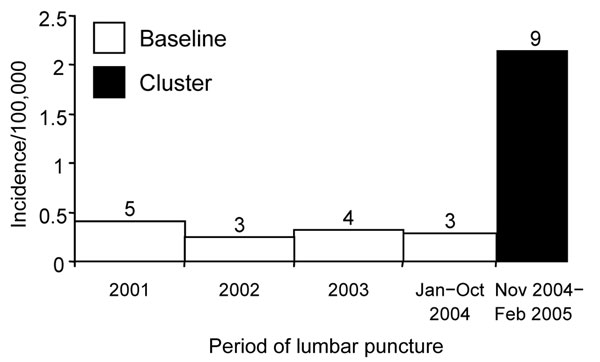Volume 13, Number 11—November 2007
Research
Distribution of Eosinophilic Meningitis Cases Attributable to Angiostrongylus cantonensis, Hawaii
Figure 2

Figure 2. Incidence rates for cases of eosinophilic meningitis attributed to Angiostrongylus cantonensis infection, by period, Hawaii, January 2001–February 2005 (n = 24). The number over each bar indicates the number of cases during the period. The incidence rates (per 100,000 person-years) for the entire 50-month study period, the 46-month baseline period (January 2001–October 2004), and the 4-month cluster period were 0.5, 0.3, and 2.1, respectively.
1Current affiliation: Emory University, Atlanta, Georgia, USA
2Current affiliation: Stanford University School of Medicine, Stanford, California, USA
Page created: July 07, 2010
Page updated: July 07, 2010
Page reviewed: July 07, 2010
The conclusions, findings, and opinions expressed by authors contributing to this journal do not necessarily reflect the official position of the U.S. Department of Health and Human Services, the Public Health Service, the Centers for Disease Control and Prevention, or the authors' affiliated institutions. Use of trade names is for identification only and does not imply endorsement by any of the groups named above.